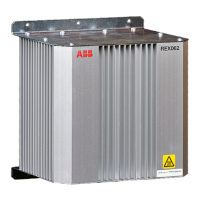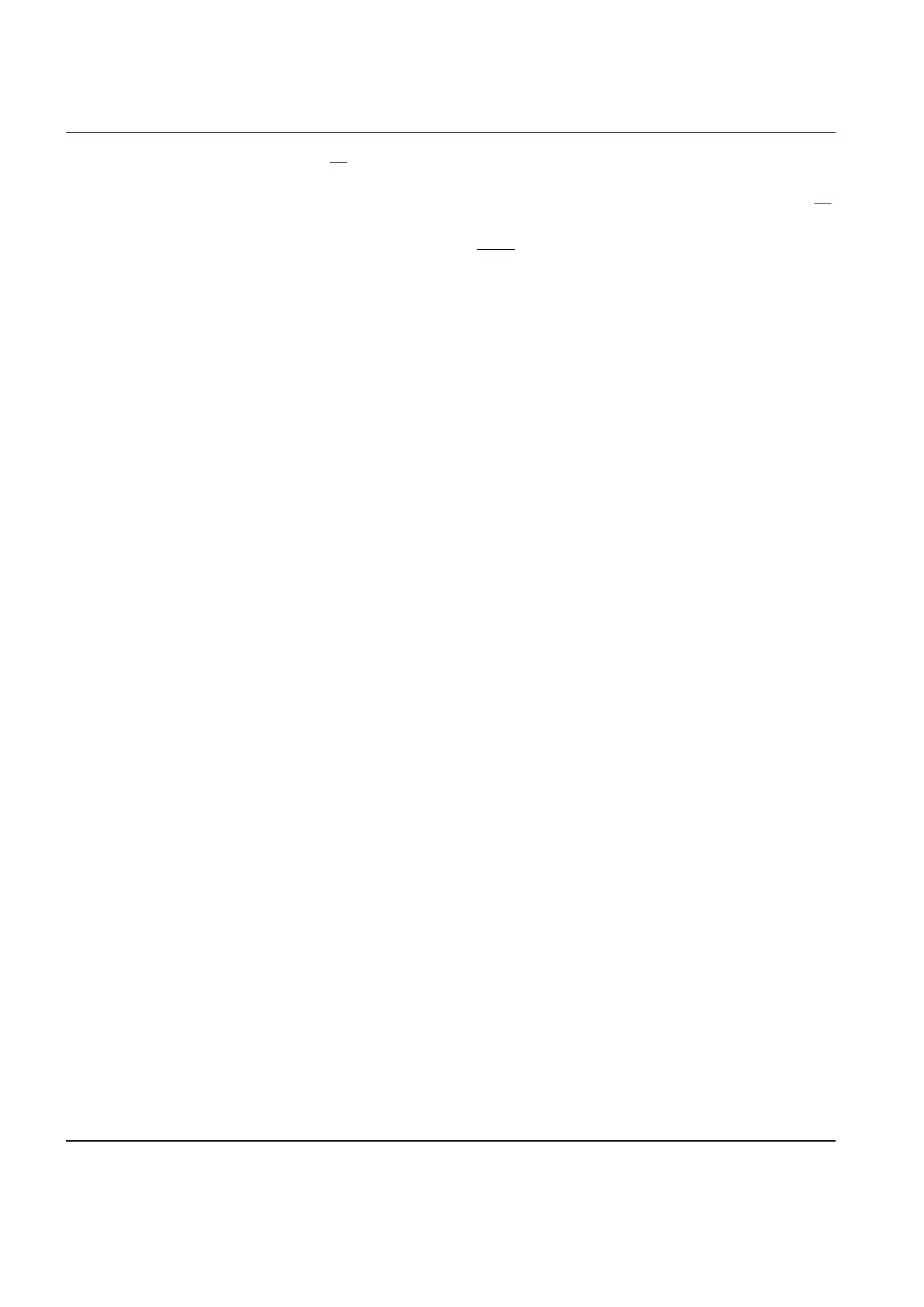Equation 76 is applicable only when the loop characteristic angle for the phase-to-
phase faults is more than three times as large as the maximum expected load-
impedance angle. More accurate calculations are necessary according to equation 77.
load min
R1Zx
RFPPZx 1.6 Z cos sin
X1Zx
IECEQUATION2307 V2 EN (Equation 145)
All this is applicable for all measuring zones when no Power swing detection function
ZMRPSB is activated in the IED. Use an additional safety margin of approximately
20% in cases when a ZMRPSB function is activated in the IED, refer to the description
of Power swing detection function ZMRPSB.
8.3.4.9 Zone reach setting higher than minimum load impedance
The impedance zones are enabled as soon as the (symmetrical) load impedance
crosses the vertical boundaries defined by RLdFw and RLdRv
[9]
or the lines defined by
ArgLd. So, it is necessary to consider some margin. It is recommended to set RLdFw
and RLdRv to 90% of the per-phase resistance that corresponds to maximum load.
IECEQUATION2419 V2 EN (Equation 146)
IECEQUATION2420 V2 EN (Equation 147)
The absolute value of the margin to the closest ArgLd line should be of the same order,
that is, at least 0.1 • Z
load min
.
The load encroachment settings are related to a per-phase load impedance in a
symmetrical star-coupled representation. For symmetrical load or three-phase and
phase-to-phase faults, this corresponds to the per-phase, or positive-sequence,
impedance. For a phase-to-earth fault, it corresponds to the per-loop impedance,
including the earth return impedance.
[9] RLdRv=RLdRvFactor*RLdFw
Section 8 1MRK 502 071-UEN -
Impedance protection
258 Generator protection REG670 2.2 IEC and Injection equipment REX060, REX061, REX062
Application manual

